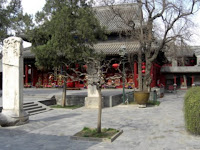
After we were seated, we asked “Does anyone here speak English?”. An 11 year old girl who was hovering nearby volunteered, “Yes.” She immediately became our interpreter and guide. Her vocabulary was extensive and stretched well beyond the usual, “How are you?” and, “How old are you?” Another sister, possibly two years younger, joined us periodically, undoubtedly to practice her English too. However, every time she opened her mouth to speak she would collapse in giggles. They, in turn, were joined by their baby sister who was dressed in a pretty pink party dress, complete with a pink crown.
She wasn’t the least bit shy and babbled happily in Korean, not at all perturbed that no one was responding to her.
Eventually their Father joined us, concerned that his children were annoying us. Quite to the contrary, we were thoroughly enjoying his family. Very soon he joined us too, lifting the toddler onto his lap.
Suddenly the toddler became unusually quiet and developed a look of deep concentration. She reached out her index finger and tentatively stroked Mal’s forearm. She collapsed into shrieks of toddler delight, looking toward her father for approval. Her Father, embarrassed by this seemingly presumptuous act, started to apologize. He then realized that Mal was charmed by this spontaneous act of exploration and was encouraging her to continue. Soon father and daughter were both lost in their own small universe where the child was learning that there are some men, mostly non-Korean, who have hair on their arms and that it is sometimes considered a sign of great strength and courage.
Given that the arm in question belonged to Mal, out of two isn’t bad!









































